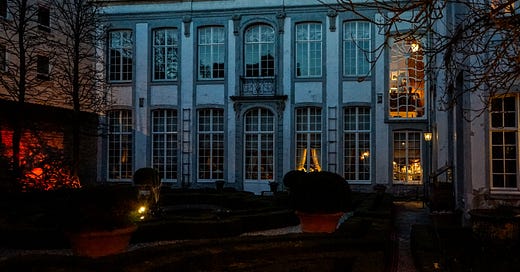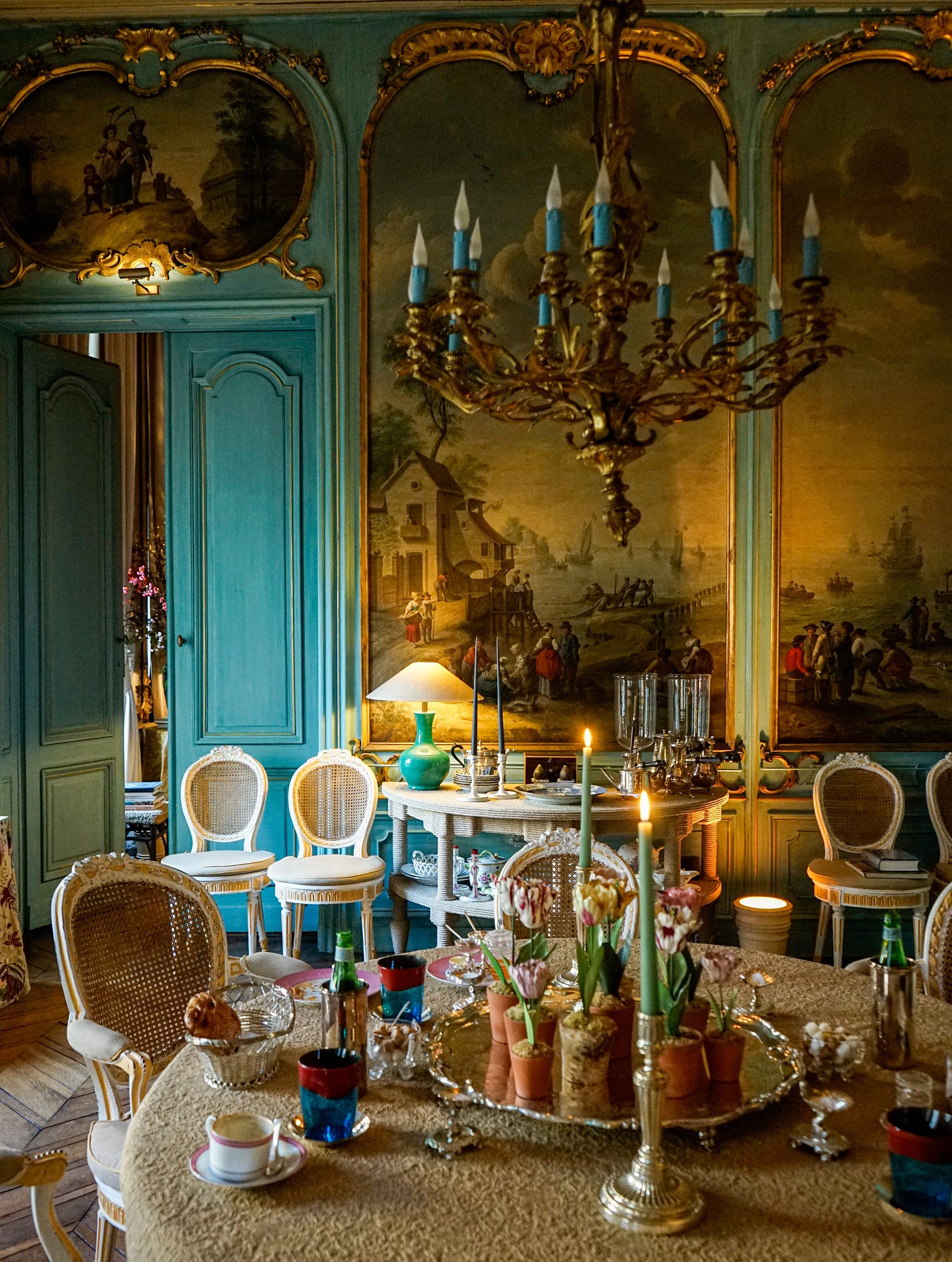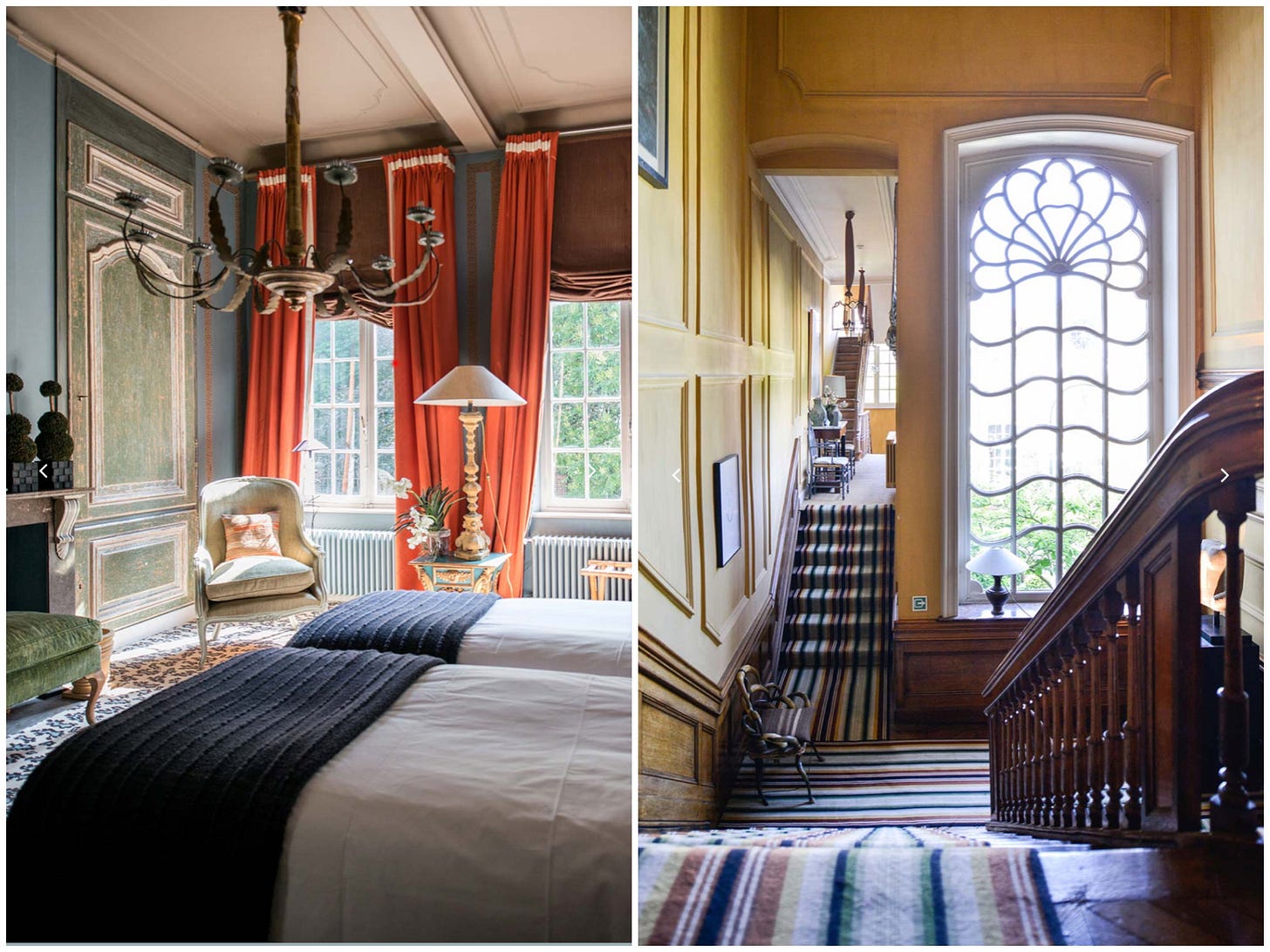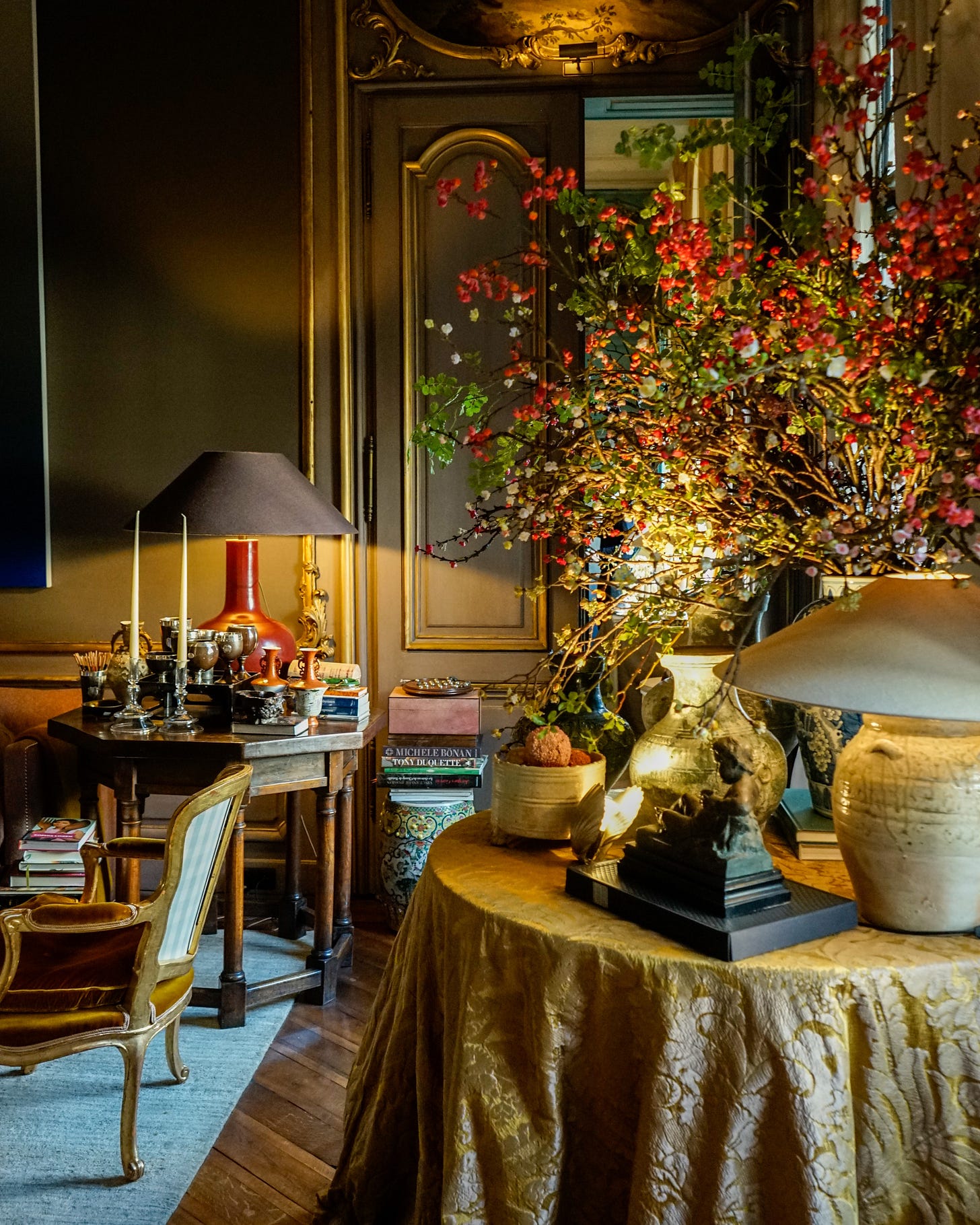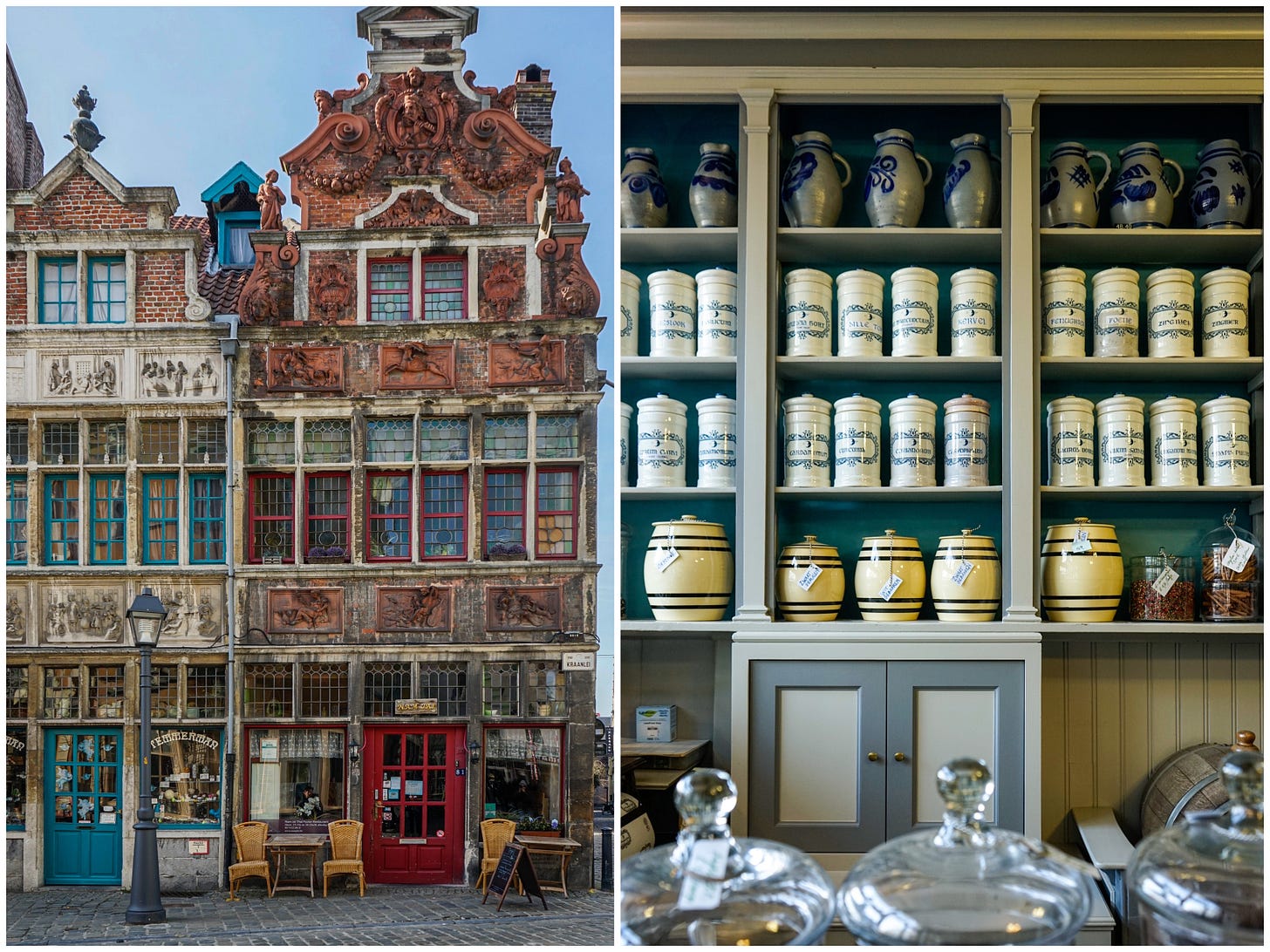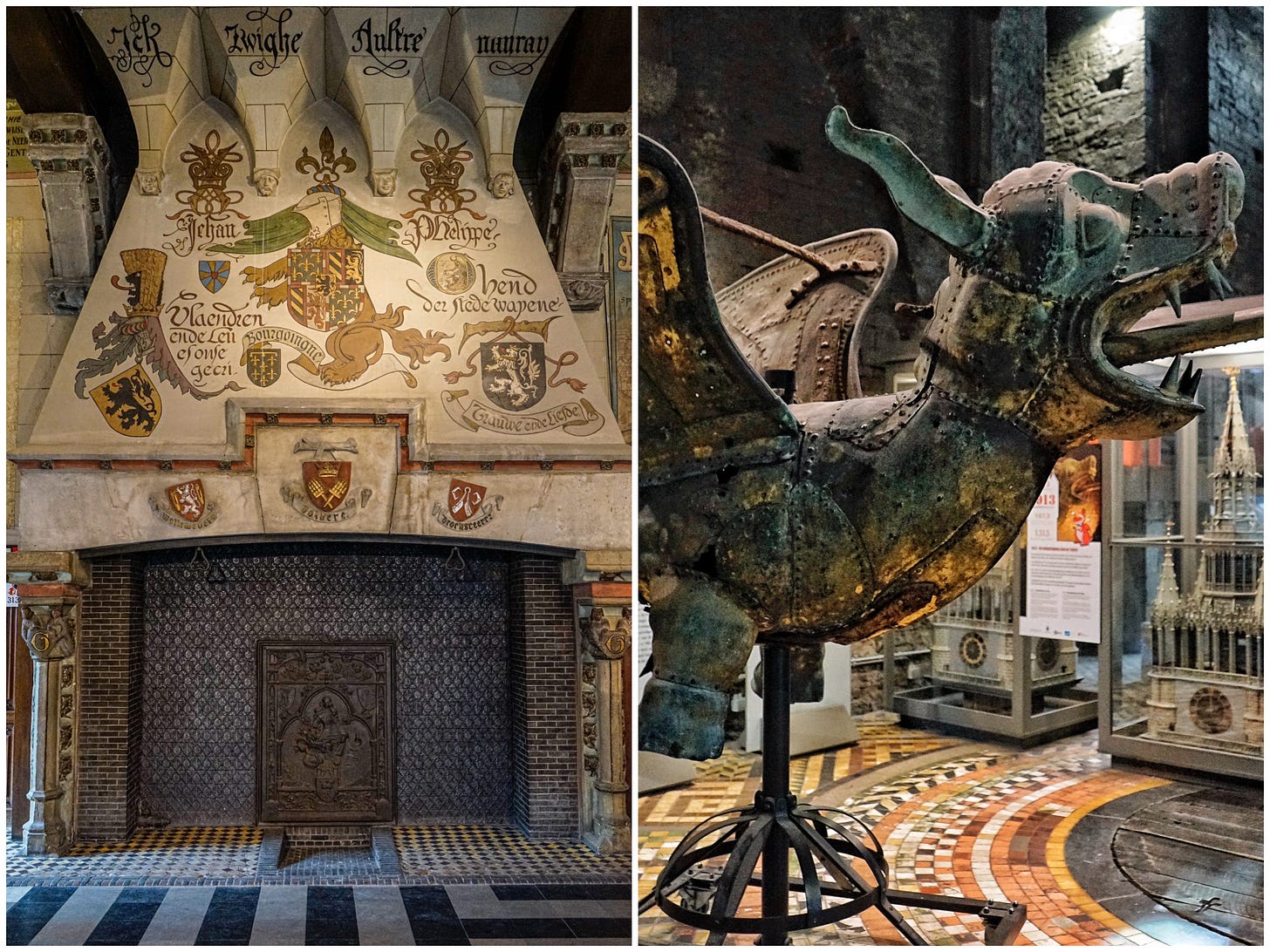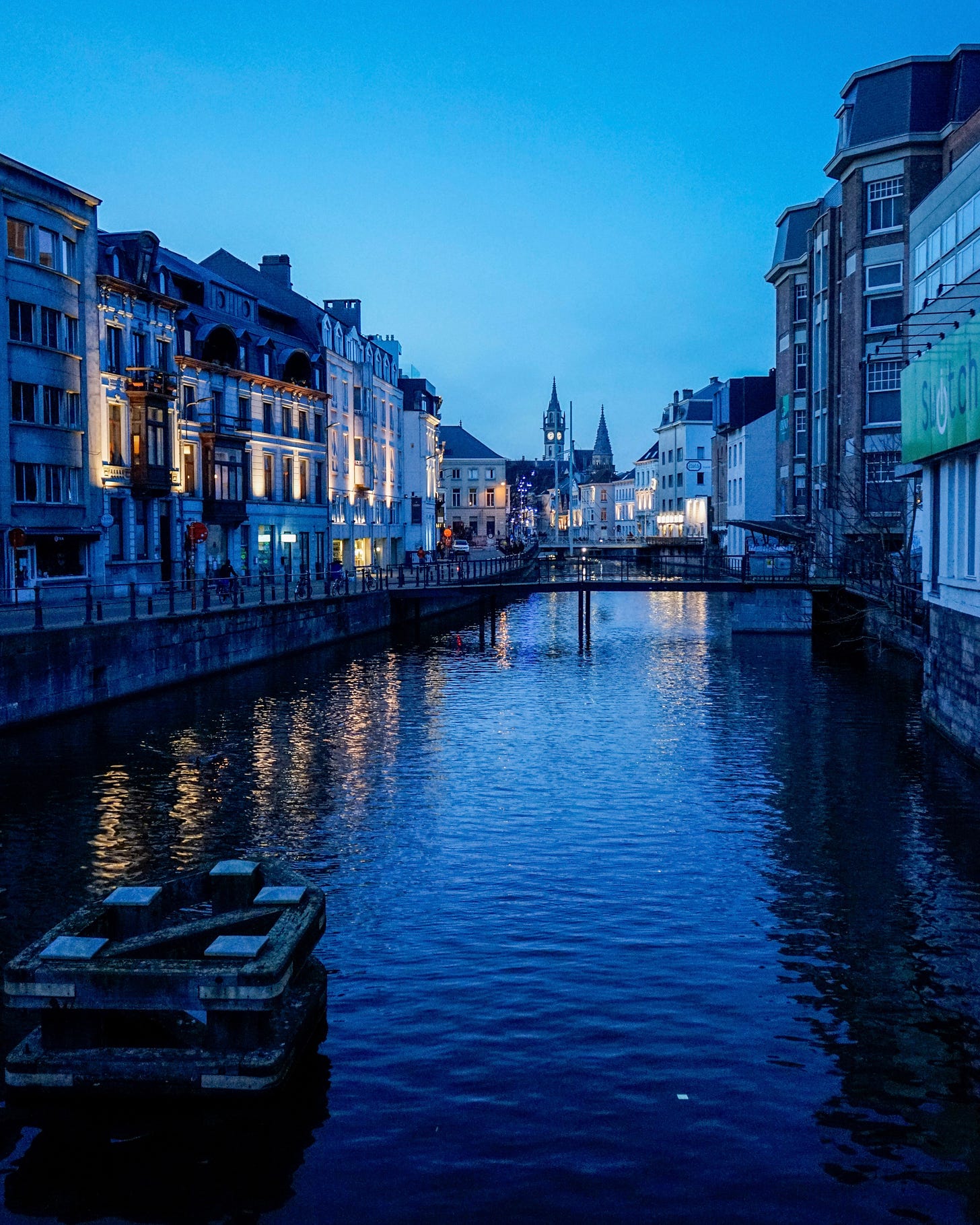Dispatch from the Past: Ghent, Belgium
A kinder, gentler century prevails: an 18th century palace turned B&B, a Napoleonic-era mustard shop, and fairytale Flemish architecture
Ghent is a famously beautiful, enchanting medieval city with centuries-old architecture and Old World charm, but it’s often overlooked by many tourists who head to Brussels, Bruges, and Antwerp first. Spend a few days in this walkable city, though, and you’ll be rewarded with moody, Old World interiors, a joyous flamboyance of Romanesque/Gothic/Flemish buildings, picturesque canals, and a courtly sophistication that rivals Europe’s grandest towns. Below, one very special hotel and a few favorite spots to bookmark for your next visit.
WHERE TO STAY: First, the palatial manse you’ll call home while you’re there (and may not ever want to leave): The Hotel Verhaegen, one of the city’s most revered architectural gems hiding in plain sight in the middle of the city. Built in 1760 as the private winter residence of Count and Countess Dhane-Steenhuyze, it’s now an intimate, magical B&B painstakingly restored and outfitted by the most gracious of hosts, designers Jan Rosseel and Marc Vergauwe. They are innkeepers, yes, but also purveyors of mood and time travel.
To stay within these walls is to be cosseted in a Fabergé egg of chic where a gentler, more civilized century prevails. This is a house dedicated to visual pleasures and physical comforts, a place designed to lose all track of time, and one that welcomes creative old souls seeking a respite from the din. Breakfasts arrive at your table in a dining room that echoes the splendor of Versailles, coffee is slow-roasted over an open fire, and tall taper candles are there for the burning.
Jan and Marc are wizards at layering colors and textures and ideas from all different time periods. These are rooms that impart a feeling the second you step into them. With just four luxurious bedrooms, their mini-palace never loses its intimate atmosphere. Guests are truly guests, and you are strongly encouraged to wander the property, exploring the nooks and crannies (and there are many): a hidden private parlor, elegant bath house, ornamental French garden, and on and on, but we’ll stop here, lest we ruin the sense of discovery.
WHERE TO SHOP: Your next order of business is sampling a heralded recipe straight out of the Napoleonic past. Load up on Ghent’s most famous artisan mustard at Tierenteyn-Verlent, the tiny minuscule jewel box of a shop in the Groentenmarkt. Always fresh — never more than three days old — the tangy smooth golden mustard is ladled out of big barrels into souvenir-worthy stoneware jugs with the year 1790 written on them. You are there for the atmospheric interior and mood as much as the mustard.
WHAT TO SAVOR : Every Thursday in Ghent is “Veggie Day” and it wouldn’t be a proper trip to this city without a stop at the wildly popular, plant-based Le Botaniste, a newcomer that has swiftly become a town favorite. The original location, on Hoornstraat, feels like an old apothecary with antique shelves, marble counters, and vintage pharmacy bottles. Order one of their signature stews from the enormous Le Creuset pots simmering on the stove — the “Tibetan Mama” is so delicious that no one will blame you if you eat here every day.
WHAT TO SEE: A visit to St. Bavos Cathedral which houses the iconic Ghent Altarpiece is a must. Completed in 1432, this enormous multi-paneled painting is widely considered to be the world’s first major oil painting and the one which marks the transition from medieval art to the age of the Renaissance. Directly opposite the cathedral is the 91 meter-tall UNESCO-listed Ghent Belfry, the tallest bell tower in all of Belgium. Climb the 350 steps for a medieval birds-eye-view of the city and visit the famous metal dragon who has been guarding Ghent since 1377.
WHERE TO SAUNTER: Ghent’s quaint rivers and canals have long been the lifeblood of the city. You can take a guided boat tour or (better yet, we think) embark on a leisurely stroll along the platforms that line the waterways and marvel at the dizzying variety of architecture, the small hidden parks, and stop for a beer at one of the countless bustling canalside cafés. Insider Tip: We think one of the most photogenic vistas lies where the Leie canal meets the Graslei and Korenlei, two medieval quays which have been docking ships since the 12th century.
— Lisa Borgnes Giramonti


